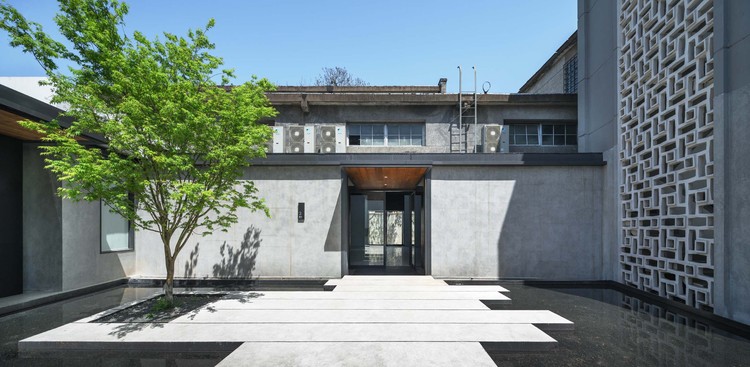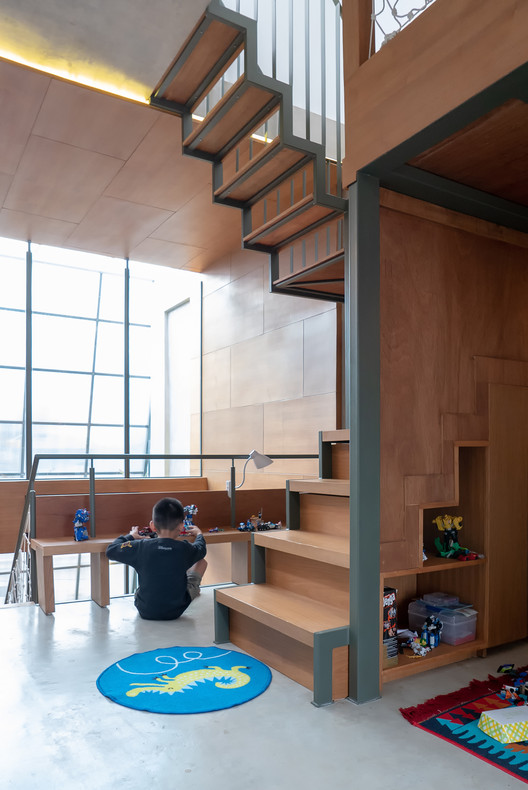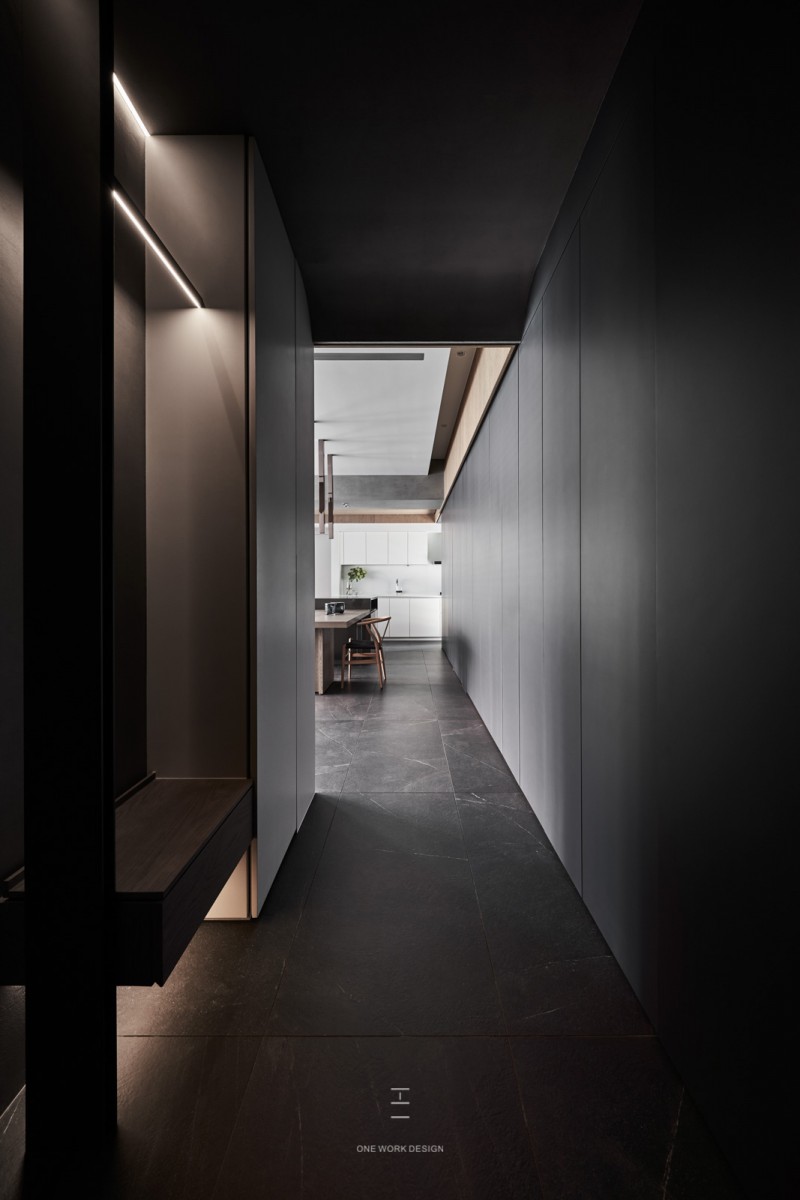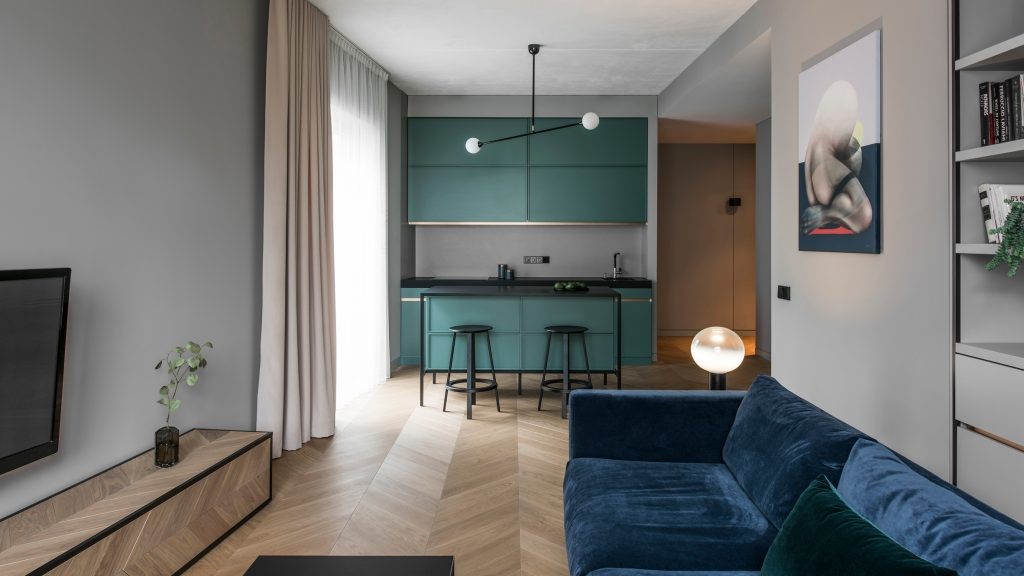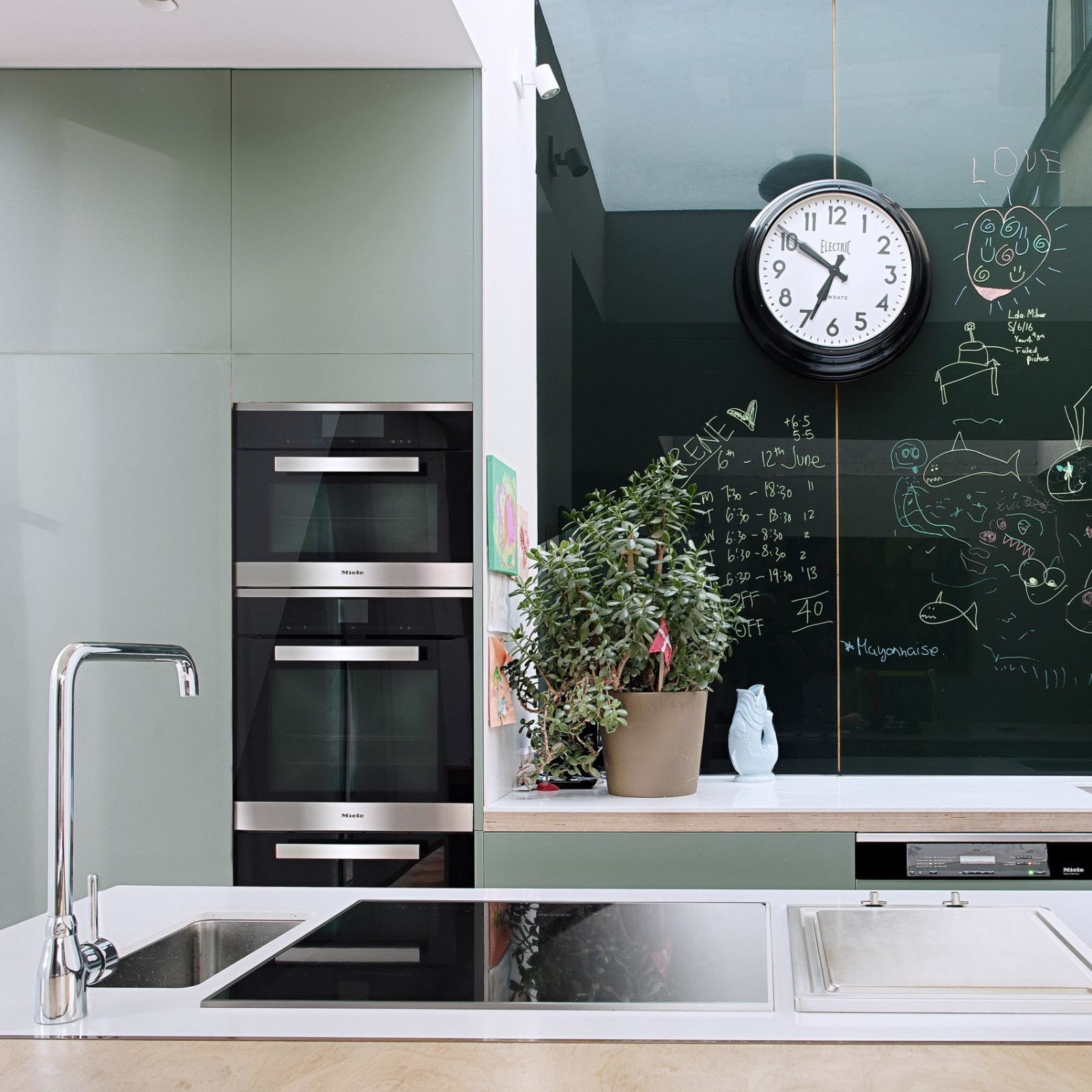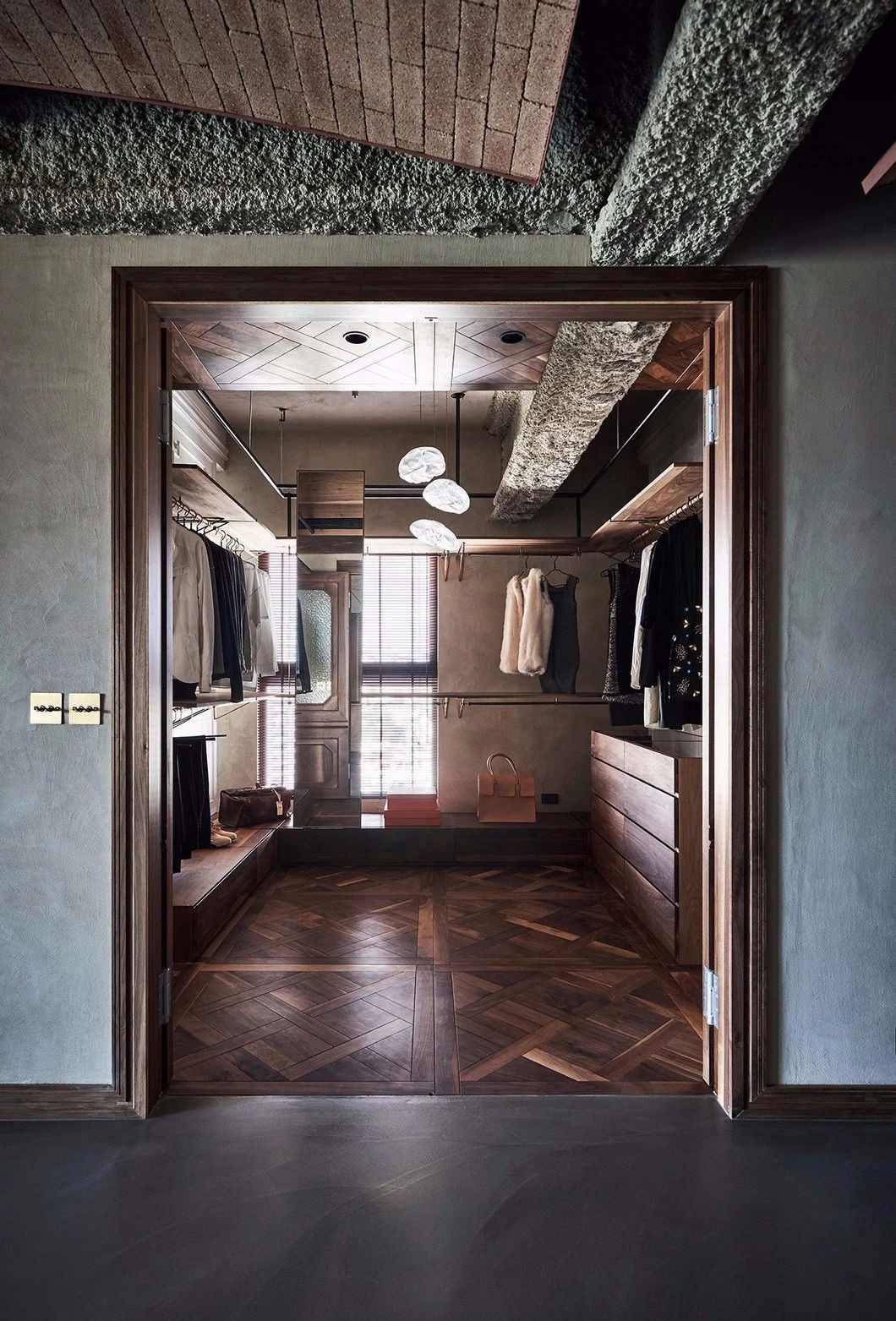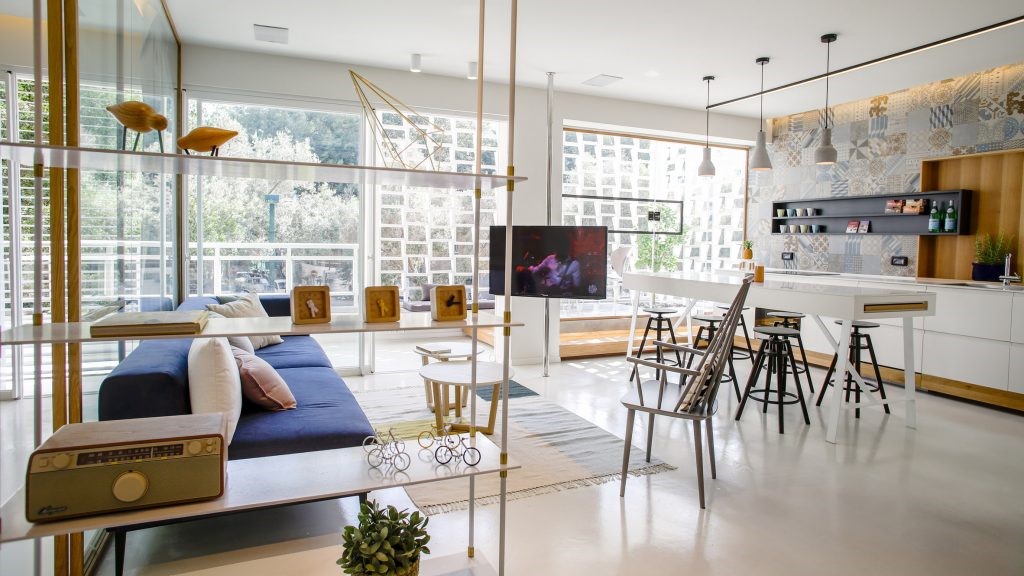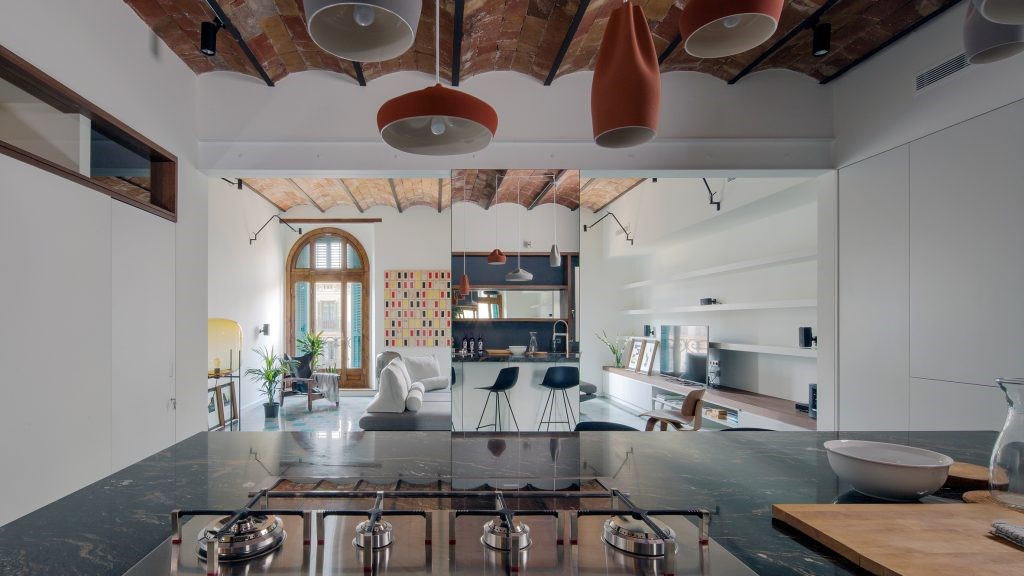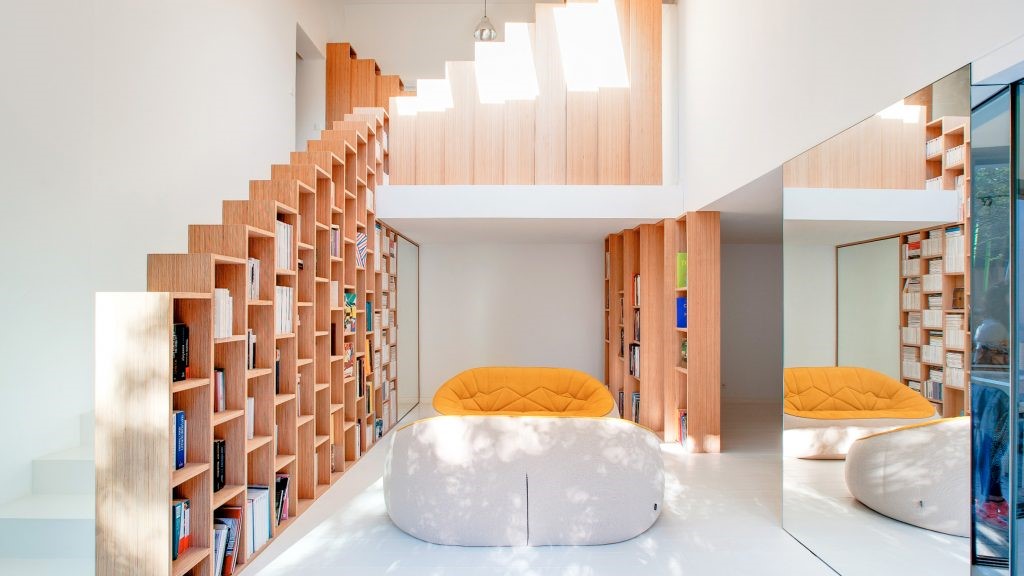Continuing House Naf Architect - Design
2018-12-12 23:00
架构师提供的文本描述。客户妻子的童年住宅是日本和西式住宅的结合,建于昭和时代之初,坐落在一座小山上,距离镰仓车站、历史名城和旅游胜地步行约15分钟。它坐落在一座山坡上,东面俯瞰花园,绿色的环境中,野生松鼠在树木和花丛中四处奔跑。房子建了90年后变得破旧不堪,在继承问题迫在眉睫的情况下,它一度面临着维护和生存的困难。
Text description provided by the architects. Childhood home of the wife of the client is a combination of Japanese and western style house built in the beginning of Showa era which stands on a hill about 15-minute’s walk from Kamakura station, historic town and tourist destination. It is located on slope of a hill looking down garden in east, verdant environment where wild squirrels run about in trees and flowers. Becoming decrepit 90 years after the construction, the house once faced difficulty in maintaining and surviving with imminent issues of inheritance.
Text description provided by the architects. Childhood home of the wife of the client is a combination of Japanese and western style house built in the beginning of Showa era which stands on a hill about 15-minute’s walk from Kamakura station, historic town and tourist destination. It is located on slope of a hill looking down garden in east, verdant environment where wild squirrels run about in trees and flowers. Becoming decrepit 90 years after the construction, the house once faced difficulty in maintaining and surviving with imminent issues of inheritance.
一旦财产所有权转让,建筑物和树木被拆除,建筑物的环境就可以改变。但是,如果没有采取措施,客户的维持费就会进一步增加。在讨论了几种选择后,客户决定将他们的日本传统风格和西式房屋连同土地捐赠给镰仓市,作为“前酒井住宅”,作为登记的有形文化财产予以保存。此外,还决定将其用作镰仓风景保护委员会的办公室,并积极予以维持。
Environment of a building could be transformed once the ownership of the property is transferred, and building and trees torn down. However if measures had not been taken, the cost of maintenance would have increased further for the client. After discussing several options, the client decided to donate their Japanese traditional style and western style house together with the land to Kamakura city as “Former Sakai Residence”, to be preserved as registered tangible cultural property. Furthermore it was decided to be utilized as the office of Kamakura Scenery Preservation Commission and be actively maintained.
Environment of a building could be transformed once the ownership of the property is transferred, and building and trees torn down. However if measures had not been taken, the cost of maintenance would have increased further for the client. After discussing several options, the client decided to donate their Japanese traditional style and western style house together with the land to Kamakura city as “Former Sakai Residence”, to be preserved as registered tangible cultural property. Furthermore it was decided to be utilized as the office of Kamakura Scenery Preservation Commission and be actively maintained.
在捐赠过程中,部分土地留给客户,让他们在解决继承事务和子女独立后建造新房子。这个项目的设计就是在这种背景下开始的。
In the process of donation, part of the lot remained with the client for them to build a new house to live after they have settled inheritance affairs and their children became independent. The design of this project began in this context.
In the process of donation, part of the lot remained with the client for them to build a new house to live after they have settled inheritance affairs and their children became independent. The design of this project began in this context.
从剩下的地段,前酒井故居、文化遗产和儿时家的妻子的客户,位于北方,许多陌生人将访问。因此,在该地段的北面是他们的新房子的入口处,利用保存良好的前酒井住宅花园作为借来的风景。停车场的边界上没有安装围栏,窗户位于高处,以留心游客的景致。
From the remaining lot, Former Sakai Residence, cultural heritage and childhood home of the wife of the client, is located in the north, to which many strangers will be visiting. Therefore on the north of the lot is entrance approach of their new house making use of the well-kept garden of Former Sakai Residence as borrowed scenery. No fence was installed on the border of the lot, and windows are located in the height to mind the views from the visitors.
From the remaining lot, Former Sakai Residence, cultural heritage and childhood home of the wife of the client, is located in the north, to which many strangers will be visiting. Therefore on the north of the lot is entrance approach of their new house making use of the well-kept garden of Former Sakai Residence as borrowed scenery. No fence was installed on the border of the lot, and windows are located in the height to mind the views from the visitors.
另一方面,在南面设计了小型私人花园,在那里,露台的窗户是面向的,以创造内部和外部的连续性。棚屋的屋顶向北向南倾斜,屋檐延伸到露台的窗户上,腾出足够的空间挂在洗衣房里,晒干日本李子做泡菜,以及其他房屋工程,增加了室内和外部的连续性。
On the other hand, small private garden was designed on the south where terrace windows are facing to create continuity of interior and exterior. Shed roof is sloping north-south and extends eaves over terrace windows to make enough space for hanging out the laundry, drying Japanese plums to make pickles, and other house works, adding practicality to the continuity of interior and exterior.
On the other hand, small private garden was designed on the south where terrace windows are facing to create continuity of interior and exterior. Shed roof is sloping north-south and extends eaves over terrace windows to make enough space for hanging out the laundry, drying Japanese plums to make pickles, and other house works, adding practicality to the continuity of interior and exterior.
我们听到这个词,最后的家,当建造一所房子时。然而,我们认为这所房子不是空巢家庭的最后家园,而是一个继续产生儿童的房子。这是一对夫妇在面对维护妻子的产家的问题后抵达的概念。建筑的外部形式设计为简单的矩形,以在圆周上分配承载壁,并在内部空间的布局中保持柔性。内墙是Shinkabe(建筑构件暴露于其中的一种抹灰墙),以显示结构并直接改变。建筑是一个故事,但是如果在天花板的横梁上安装了刚性地板的话,建筑的承载力要重新计算为两层建筑。其结果是,采用胶合板制作、保持组合柱、梁、斜撑相结合的结构,并使其成为特征内部。
We hear the word, final home, when building a house. However we supposed this house to be not a final home for empty nesters but a house continuing to child generation. This is a concept that the couple arrived at after facing the issue of maintaining wife’s natal home. The exterior form of building was designed simple rectangular to allocate bearing walls in the circumference and leave flexibility in the layout of interior space. Interior walls are Shinkabe (a type of plastered wall in which structural members are exposed) to show the structure and be directly changed. Statutorily, the building is one story, but bearing force of the structure is back-calculated for the building to be re-applied as two-story building if rigid floor is installed on the beams of high ceiling. As a result, haunch form structure was created, holding combining pillars, beams and diagonal braces by plywood, and made characteristic interior.
We hear the word, final home, when building a house. However we supposed this house to be not a final home for empty nesters but a house continuing to child generation. This is a concept that the couple arrived at after facing the issue of maintaining wife’s natal home. The exterior form of building was designed simple rectangular to allocate bearing walls in the circumference and leave flexibility in the layout of interior space. Interior walls are Shinkabe (a type of plastered wall in which structural members are exposed) to show the structure and be directly changed. Statutorily, the building is one story, but bearing force of the structure is back-calculated for the building to be re-applied as two-story building if rigid floor is installed on the beams of high ceiling. As a result, haunch form structure was created, holding combining pillars, beams and diagonal braces by plywood, and made characteristic interior.
为了维护的可持续性,选用了轻质和耐用的金属墙板作为外墙材料。由于法律原因,在采用新卡贝作内饰时,由于法律原因不能将金属壁板应用于柱的外部,因此采用硅酸钙板和雪松作保护涂层的成型。部分外墙的造型将随着时间的推移而老化,我们希望这一转变能使其现代外立面与旧酒井住宅的老外墙更接近和谐。
For purpose of maintenance sustainability, light and durable metal siding was selected for exterior wall material. When employing Shinkabe for interior, metal siding could not be employed for exterior side of pillars for legal reason, thus molding made by calcium silicate board and cedar with protective coating was employed. Molding part of the exterior wall will age by the time, and this transformation, we hoped, will bring its modern exterior with metal siding closer to the aged exterior of Former Sakai Residence to stand in harmony.
For purpose of maintenance sustainability, light and durable metal siding was selected for exterior wall material. When employing Shinkabe for interior, metal siding could not be employed for exterior side of pillars for legal reason, thus molding made by calcium silicate board and cedar with protective coating was employed. Molding part of the exterior wall will age by the time, and this transformation, we hoped, will bring its modern exterior with metal siding closer to the aged exterior of Former Sakai Residence to stand in harmony.
Architects Naf Architect & Design
Architects In charge Akio Nakasa (Principal Architect) , Teppei Amano
Photographs Toshiyuki Yano
 举报
举报
别默默的看了,快登录帮我评论一下吧!:)
注册
登录
更多评论
相关文章
-

描边风设计中,最容易犯的8种问题分析
2018年走过了四分之一,LOGO设计趋势也清晰了LOGO设计
-

描边风设计中,最容易犯的8种问题分析
2018年走过了四分之一,LOGO设计趋势也清晰了LOGO设计
-

描边风设计中,最容易犯的8种问题分析
2018年走过了四分之一,LOGO设计趋势也清晰了LOGO设计













































































